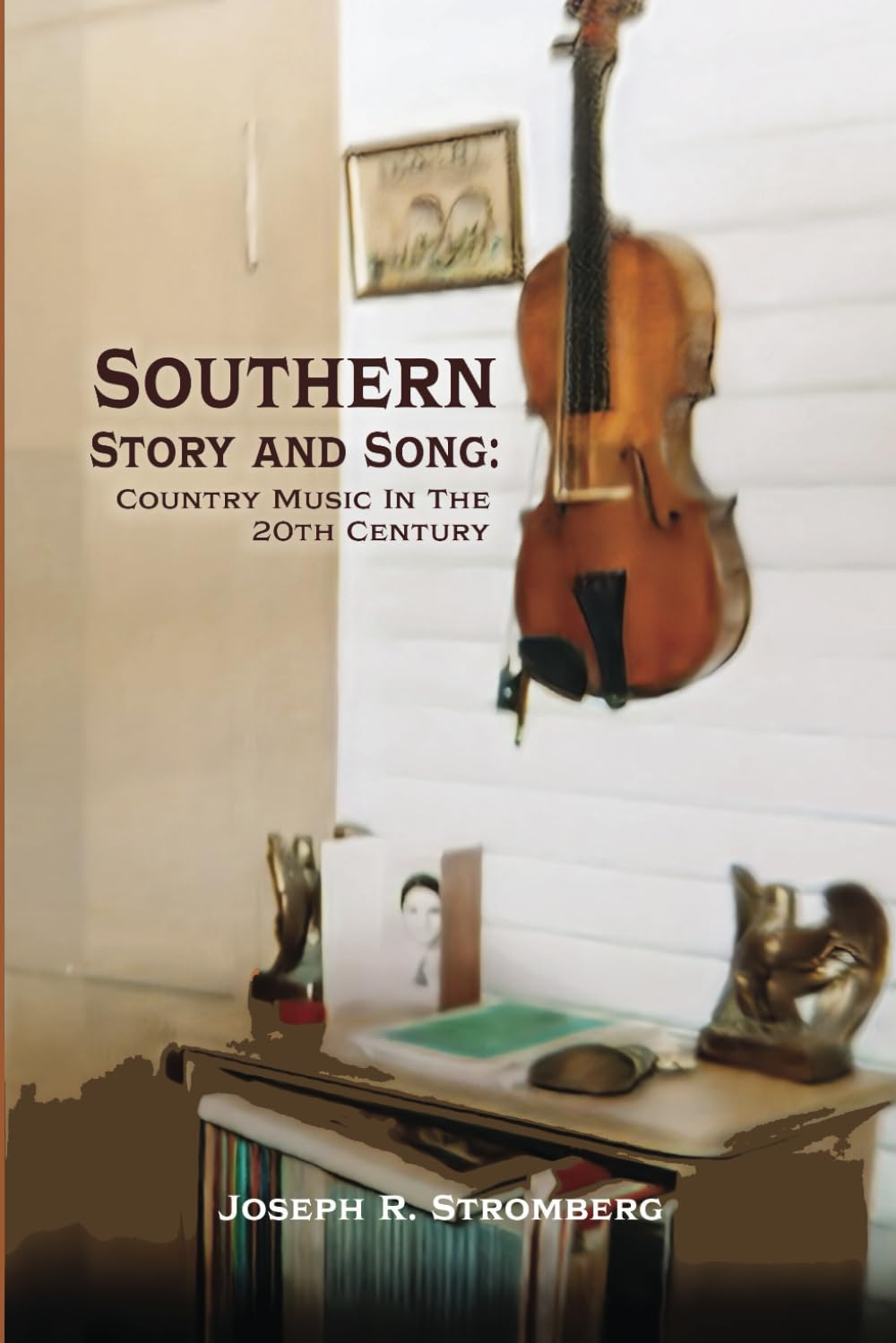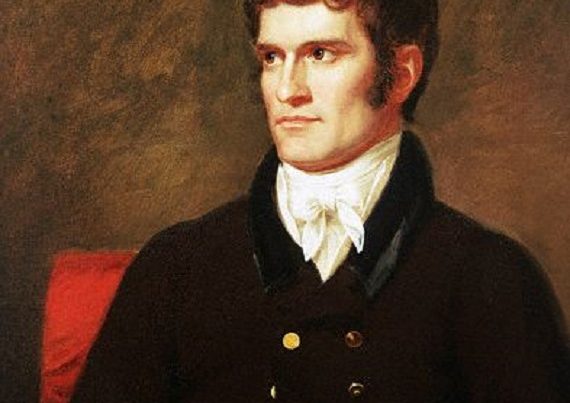A review of Southern Story and Song: Country Music in the 20th Century, (Shotwell Publishing, 2024) by Joseph R. Stromberg,
Some claim that the zenith of Country Music’s popularity was in the 1990’s and early 2000’s. With mega-selling artists like Shania Twain, Garth Brooks, and Toby Keith, Nashville record company executives certainly weren’t hurting for cash during this era and so if this judgement is based solely on how much money the Country Music industry generated it’s probably correct. Lots of people bought Ropin’ the Wind and Trisha Yearwood’s 1991 debut album. However, to this reviewer, a better measuring stick for ‘popularity,’ albeit a somewhat more subjective one, might be to ask when Country Music enjoyed it broadest acceptance and made its closest approach to being the quasi-official music of mainstream America. That point seems to have been from the mid 1970’s until around 1984, a period which coincided with the career peaks for artists such as Willie Nelson, Waylon Jennings, The Oakridge Boys, George Strait, The Judds and the relentless hit producing machine that was Fort Payne’s own Alabama. While certainly not everyone was a regular listener to Country radio during this time, the music was ubiquitous and commonly accepted as the sound of middle America from West to East, and North to South. Every blue-collar stiff on a factory floor or truck driver behind the wheel could relate to Johnny Paycheck’s “Take This Job and Shove it,” be they from North Carolina, Michigan or California.
Whatever your criteria, it doesn’t seem like Country Music enjoys the same esteem it once did, despite there being many outstanding artists out there still making great Country Music. This says much more about 21st Century America than the music itself. As Joseph Stromberg makes clear in this excellent collection of essays and musings, Country Music is probably the South’s greatest gift to American culture during the 20th Century, but the music’s decline in preeminence tracks fairly closely the fraying and decay of that culture as well as the reemergence in the 21st Century of a white-hot elite class hostility, bordering on outright hatred, of Red State, Trump-supporting middle America, always the chief audience and creators of Country Music, not seen since the days of the Scopes Monkey Trial. Needless to say, this refired hostility, just like its earlier incarnation, is aimed especially at the South. Starting in the Bush II era, this neo-Radical Republicanism exploded into a full-blown mania in certain quarters of the academic and intellectual Left after the Manhattanite Trump won in 2016. Somehow Trump won the presidency in 2016 (and now 2024) because the Confederacy actually won the Civil War. Or something like that. If the old Southern stereotypes of Snuffy Smith, sweaty fundamentalist preachers and hooded Klansmen were being refashioned for contemporary 21st Century uses then its perhaps no surprise many want to return the South’s musical gift and replace it with something else.
Then again, it could really just be the music itself. As Stromberg says, “Country Music has always been about family, love, death, divorce, and cheating, among other things; that is, it has involved a certain ‘social realism.’” In other words, Country Music has always been about real life. He quotes the famous sociologist and student of the South John Shelton Reed as saying, “country music is almost always about something” – something told as a story.” Yet, therein lies the problem. So much of contemporary American life revolves around efforts to escape the ‘real’ and to live in fantasies of our own creation. The great themes of Country music were always about facing the harsh realities of life, of having the strength and faith to endure them and maybe come out the other side a wiser person. Or to say to hell with it all and just get drunk with your friends in low places down at the bar. Either way, that grizzled approach to living isn’t particularly popular today. Nor is Country Music’s traditional nostalgia for home, Mama, farming, and rural life in general. Even Country Music’s penchant for narrative story-telling in musical form taxes the patience and imagination of contemporary American listeners. Clever lyrics, a witty turn of phrase, or heartfelt appeals to the good ole days can’t compete with the power images.
So, popular music today tends to have less emphasis on the lyrics and more on the beat.
Joseph Stromberg is the right guide for this tour of Country Music’s history and is a uniquely insightful expositor of its deeper significance. A native Floridian (of the genuine Southern variety) from Fort Myers, he has degrees in history and is a former Richard M. Weaver Fellow. Stromberg has a long list of publications in leading conservative publications such as the Journal of Libertarian Studies, Chronicles Magazine, the Independent Review and The American Conservative. His writings on history and economics, scattered among these and other journals, are absolutely first rate and someone should pull them together for an anthology. Taken together they would make a significant contribution and be widely appreciated. As would be expected, his writing here is extraordinarily erudite and knowledgeable but also funny and personable because the music Stromberg writes about isn’t just a specimen for critical analysis but the beloved music he grew up listening to, and he was a keen observer and student of the culture of that music and of the South which gave it birth.
Finding the origins of Country Music in the colonial and antebellum South, Stromberg has many brilliant insights on Country Music’s long history. Obviously, early on the Virginia and Carolina colonists brought their musical traditions with them from Britian, but once in America these became steadily ‘Southernized.’ Virginians loved dancing and thus preformed the English country dances and reels from the home country but less formal affairs such as barbecues, “often found a black fiddler and banjoist making music.” Such tastes only grew and proliferated during the antebellum era as the Old South pulsed with “cotillions, minuets, Virginia and Scotch reels, country dances, jigs, etc,” well into the hours of the night. Combined with music in church and other venues, both formal and informal, the pre-Civil War South was a place of rich, dynamic music. That certainly did not change after 1865.
Still, it was not until the 1920’s that Country Music emerged as a recognizable, and marketable, genre. This was driven by several factors, but certainly the development of radio and recorded music was essential. But so too was what Stromberg describes as the first of several “pro-hillbilly” movements, the first around World War I when there sprung up a sophisticated interest in the folk customs, and native music, of the people of Southern Appalachia. During this era the Englishman Cecil J. Sharp trapsed the hills and hollers of North Carolina looking for lost English and Scottish songs and finding some. Others followed suit. Stromberg is suspicious about the motivation of the outsiders who became suddenly enamored by mountain folk, the “downtrodden yet noble ‘Anglo-Saxons’ of the first water.” “As a rule,” he says, “when ‘hillbillies’-or the Scots Irish with whom they strongly overlap—are being damned, some larger point is being made, if they are being praised, some kind of swindle is under way, often linked to a felt need for cannon fodder.” If the dominant culture sees Southern rednecks as bad then they are an obstacle to whatever grand, transformative project that culture’s elites are pursuing. If they are lauded and beloved, then those elites see them as useful to their purposes.
Beginning in the 1920’s Country music blossomed into many of its now recognizable subgenres and styles, but Stromberg argues that, “a rough separation set in between country music (descending from Jimmie Rogers and his followers) and string-band music generally, the latter split into bluegrass and folk music, with the latter as more of a Northern and politically leftist project.” While that may seem like a bad thing, Stromberg notes the affinity that many on the cultural left of the 1960’s had for traditional Appalachian music. That affection continued in some of those quarters. You could hear it, after all, on NPR shows like Prairie Home Companion. Beyond this, Stromberg shares his takes on the foundational role that the great Bill Monroe had on Bluegrass and Ernest Tubb’s establishment of the ‘honkey tonk’ sound in the 1930’s. There is also Bob Wills and Texas Swing as well as Cajun music from Louisiana which Stromberg places in the context of all this growth and development. What’s also interesting is that it wasn’t only Nashville that served as a hub for this music but other places too like Atlanta.
Still, Nashville does loom large in Stromberg’s overview of Country Music history. He quotes historian Mark Royden Winchel as saying the years 1946-1953 were the “boom years for country music,” and Nashville certainly assumed the role of its capital during this period and the king was Alabama’s Hank Williams. But its at this moment, however, that something very interesting happens. Beginning around 1955 Country Music’s popularity began to dip dramatically. Young people, those who bought the most records and listened to the radio regularly, began to turn to the exciting new sound of Rock n’ Roll. What developed in response was the ‘Nashville Sound’ of the 1960’s with is crisp production, ‘country-pop’ or ‘countrypolitan’ stylings which added, “choruses, violin sections, and general slickness everywhere.” Country music purists have long derided this era for just these reasons, but it just might be that the Nashville Sound saved Country Music from further obscurity, and no one can deny the greatness of Jim Reeves, Patsy Cline, and Brenda Lee who were the stars of this era.
But many still didn’t like being confined to what Nashville was expecting in the 1960’s so further musical expression was found coming from different places like Bakersfield, California with Buck Owens and renewed interest in the traditional sounds of bluegrass. Just listen to theme song of the Beverly Hillbillies from 1962. It was that Nashville Sound, however, that opened the door to the mainstreaming of Country Music as evidenced by The Beatles cover of Owens’s “Act Naturally,” and other crossovers between Rock artists and the Country Music world. And did that cross-fertilization ever take hold! The 1960’s and 1970’s was awash in Country-Rock bands and Rock bands that obviously were influenced by Country Music: the Byrds, Gram Parsons, Pure Prairie League, the Nitty Gritty Dirt Band and eventually the Eagles. The Southern Rock movement of the 1970’s also wore its Country influences very much on its sleeves. Just listen to the Allman Brothers Band, the Charle Daniels Band, the Marshal Tucker Band and numerous others. Even harder acts like Lynyrd Skynyrd and Molly Hatchet evidenced country influences. California native and Skynyrd guitarist Ed King said that his band was a Rock band fronted by a great Country singer in Ronnie Van Zant.
In the 1980s Stromberg finds Country Music losing its way. He cites an insider who claims decisions were made in the industry around 1985 to shun any artist over 35 as the music became extremely formulaic, heavily influenced by pop music, and played on radio stations which were increasingly own by corporate networks. It all became just plain bland and boring. As someone with first had experience in this era, Stromberg’s judgement is spot on. There was nothing on Country Music after 1985 that appealed to an 80’s teenager’s ear. This dreck, of course, led to the ‘traditionalist’ revival of the late 80’s and 90’s with artists like Dwight Yokum, etc. Still, Country Music has never quite recovered, in my judgement, from that mid-80’s funk and I attribute County Music’s financial successes in the 90’s to a stable of good and trend savvy acts like Garth Brooks rather than a return to the tastes of earlier times. Stromberg wisely notes and dismisses late 90’s and 2000’s ‘hick hop.’
In Southern Story and Song: Country Music in the 20th Century, Stromberg does much more than simply offer his thoughts on Country Music’s history. He links it clearly with Southern culture noting the presence of Southern idioms of language and life that recur repeatedly in its deep catalog. Music is a form of literature and so we see the reoccurring themes of Southern literature herein; attachment to home and place, the pain of dislocation for them, the tension between individualism and the duty to family and community, patriotism as well as populist fury at crooked politicians and corrupt businessmen. His essay on Southern language as found in Country Music is alone worth the price of the book. Ultimately, Stromberg says, “Country music as a specific phase of the South’s musical inheritance has become a global phenomenon, suggesting that other agrarian peoples, not fully neutered and industrialized, find values in it that resonate with them. Here the music helps sustain social and familial memory in the face of a centuries-long assault on all memory…” And anyway, Stromberg adds, “we just plain like it.” If you like Country music too you should get this book for yourself.







“– something told as a story.” Yet, therein lies the problem. So much of contemporary American life revolves around efforts to escape the ‘real’ and to live in fantasies of our own creation. The great themes of Country music were always about facing the harsh realities of life, of having the strength and faith to endure them and maybe come out the other side a wiser person.”
Reality is something that Yankees, liberals, political parties… whatever… have never understood. They really believe that Santa Clause and Christ have the same father. They understand Country Music no more than they understand Christmas.
Reality comes from God’s creation, not from man’s hand. Some (not all) of the modern Country Music fiber is nurtured , not by the artists, but by the artless.
JMO
The best were the Statler Brothers
Hard to argue against those guys.